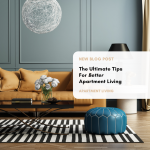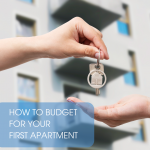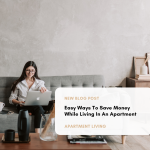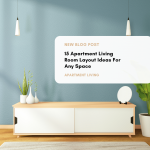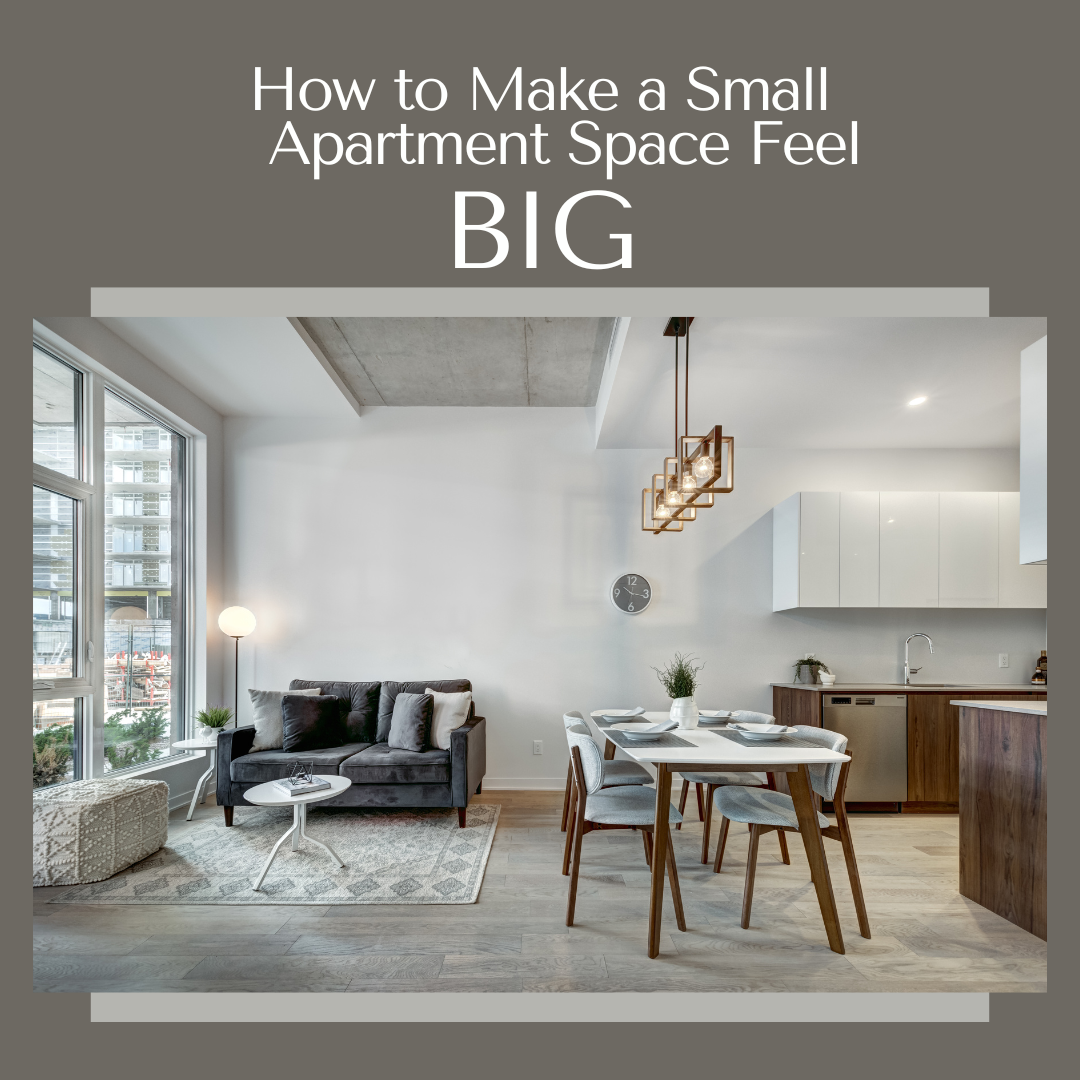
How To Make a Small Apartment Space Feel Big
May 26, 2021 2:42 pm Leave your thoughts
Living in a small space can feel cramped! That’s not always because the space is small, but because we don’t know how to expand it with simple tricks and tools. Here are some simple tips to help make your small space feel big:
First things first, simplify!
Don’t over decorate a small space. In a tight living area, less really is more. Even if it’s stylish, too many pieces of decor, furniture, or those little knick-knacks from your favorite trip, can make a space feel overwhelming and cramped. Take the time to go through your belongings and get rid of what you don’t really need. It will be a long process, but you will definitely feel better when it’s organized.
To simplify your home, sort your belongings into ‘must-haves’, ‘sometimes used’, and ‘rarely or never used’. This deliberate technique helps declutter and prioritize. Consider minimalism, where everything in your apartment has a function or brings joy.
To keep your home organized and spacious, this idea goes beyond beauty to utility. Get inventive with digital storage for images or cloud documents for paperwork to clear up space for hard-to-get-rid-of objects.
Invest in multi-functional furniture, like beds with built-in drawers or ottomans with storage space, to gain more storage without sacrificing precious square footage.
Maximizing Vertical Space
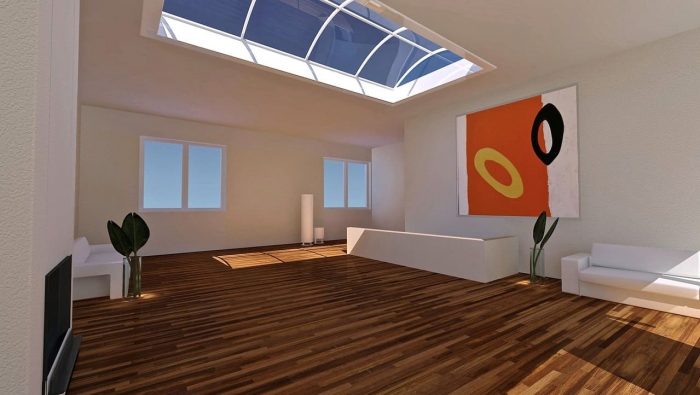
Maximizing vertical space works wonders, and it’s not just about shelves and storage. Picture this: a vertical garden that brings a slice of nature indoors, making your walls burst with life and color. It not only adds a unique aesthetic to your space but also draws the eye upward, creating a sense of height and openness.
Now, think about art. Wall-mounted art installations or wallpaper with vertical stripes can transform your room. These aren’t just decorations; they’re visual tricks that make your ceilings seem higher and your rooms feel more spacious. The beauty of this approach lies in its simplicity and the dramatic difference it can make. So, go ahead and give it a try. Turn those bare walls into your canvas and see how much bigger your apartment feels.
Reflect Light
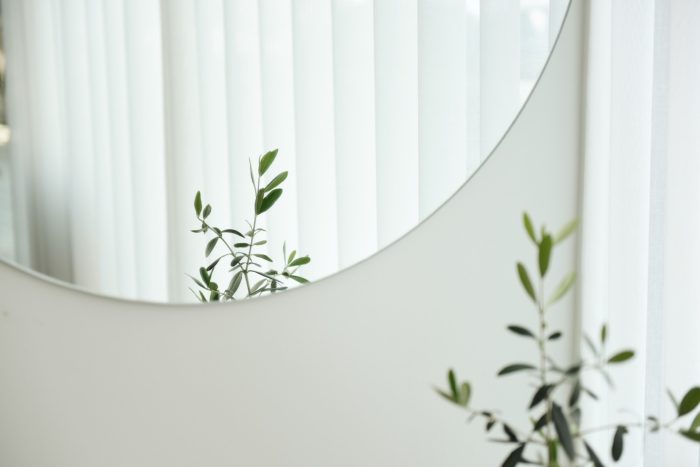
Light has an amazing way of changing how we feel about our space. Adding mirrors or even shiny objects and decor can help open up your space. They create the illusion that it is bigger than what it truly is. Reflecting light with a mirror will create a refreshing feeling of openness. Depending on the size of the mirror, it could make you feel like you have double the space!
In addition to mirrors, shiny furniture and decor can reflect light and create the illusion of more space. Use wall-mounted lights or slim floor lamps to highlight dark areas and make the space feel bigger. Strategic lighting can draw the eye upward or across the room, changing the perceived size of your space. Choose light fixtures that match your decor and maximize light dispersion to create a unified design.
Hang Curtains High
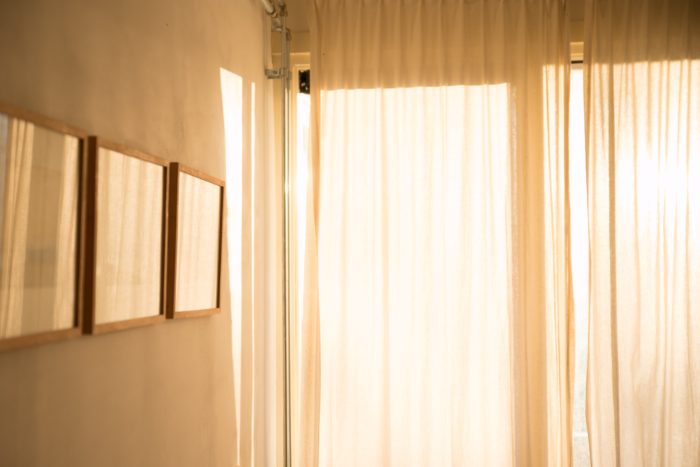
Another effortless way to add elevation to a tight room is to hang curtains around the windows and hang them high. This trick is guaranteed to give height to a short space. Curtains have an incredible way of completely transforming a space. They create the illusion of high ceilings, even if you don’t have them! It could be the perfect addition to make your apartment feel bigger.
Choose lightweight materials that let natural light through to boost the effect of high-hung curtains and create a pleasant, breezy environment. Extending the curtain rod beyond the window frame makes the window appear wider and lets more light in when the curtains are open. Using sheer or translucent materials with this technique maximizes natural light and creates a more expansive ambiance.
Use Neutral Tones
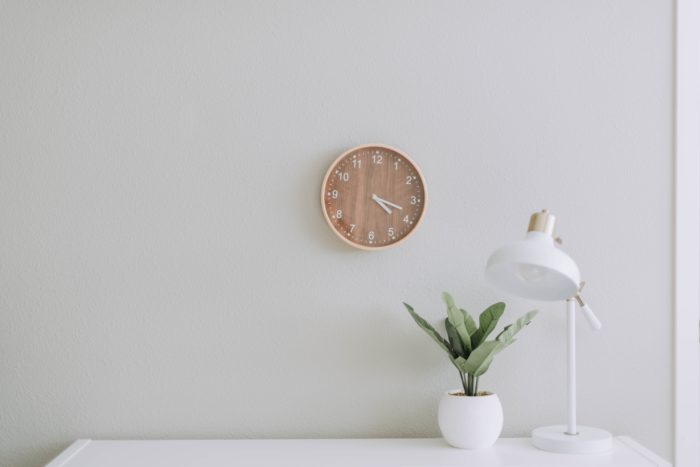
Learning how to make your apartment feel bigger involves choosing lighter colors for your walls and large floor coverings that match the floor to visually extend your room’s boundaries. Overusing bright colors can quickly shrink any space! Minimize the range of colors used in paint, decor, and furniture, and avoid dark, deep tones as much as possible. Adding neutral paint is an inexpensive and immediate way to open up a small area.
When working with colors outside of a neutral palette, it is best to group similar colors to create a sense of cleanliness and organization.
When using neutral tones, layer different shades and textures to add depth and interest without overwhelming the space. Incorporate elements like a textured rug, woven baskets, or soft throw pillows in varying shades of your chosen neutral palette. This approach keeps a clean and organized look while introducing warmth and character. For a pop of color, select one or two accent pieces, but keep the overall palette subdued to maintain the illusion of a larger space.
Keep It Clean
It doesn’t matter how you decorate a space if you don’t keep it tidy.
To make a small apartment feel bigger, focus on decluttering regularly and selecting furniture that doubles as storage to maintain a neat and orderly space that appears more spacious. Make a daily effort to dust, sweep, and store any clutter, and your space will always feel livable and breathable.
One thing that may help is setting a cleaning routine. Establish what times during your days and weeks you can pick up a little. Rather than trying to fit it in every day, you can schedule it during your prime time.
Beyond establishing a cleaning routine, invest in smart storage solutions that double as decor. Floating shelves, for example, provide storage without sacrificing floor space and can be styled with books, plants, or other personal items to add personality to your apartment. Additionally, consider multi-purpose cleaning tools that are easy to store and effective across different surfaces, minimizing clutter and maximizing efficiency in maintaining your space.
Embrace Flexibility: Dynamic Spaces and Modular Living
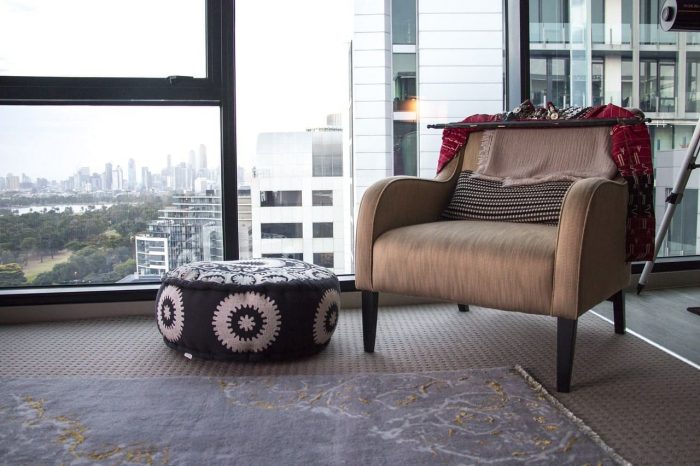
Let’s explore how flexible layouts and modular systems can transform your small apartment. Imagine furniture that moves with your life, like a sofa that splits into chairs for a get-together or a bookshelf that slides to reveal a work desk. This isn’t just about saving space; it’s about creating a home that adapts to your needs, whether you’re working, relaxing, or entertaining. Modular furniture allows you to rearrange your space for any activity, making your apartment feel like a new place every time. It’s like having multiple rooms hidden within one clever layout. The key here is adaptability. With movable partitions, for example, you can separate your living area during the day for focused work time and then open it up in the evening to enjoy a spacious living room.
Now, think about the possibilities that come with modular systems. They’re not just pieces of furniture; they’re tools for creative living. A bed with a desk that folds out can turn your sleeping area into a daytime office, giving you the feel of a one-bedroom apartment in a studio space. And it’s not all about functionality; these pieces are designed to look good, blending seamlessly with your decor while maximizing your living area. By focusing on flexible furniture and layouts, you’re not just optimizing space; you’re enhancing your lifestyle, making your small apartment feel not just bigger, but also more like home.
Integrating Technology for Smart Space Management
Let’s explore how smart technology transforms tiny living spaces into efficient, comfortable havens. Picture this: a coffee table that serves its primary purpose, adjusts its height, and expands into a dining table when you have guests. That’s smart furniture, blending function with space-saving grace. And it doesn’t stop there. Imagine a compact, sleek shelf that holds your books and hides a fold-out desk for your work-from-home days. These pieces are game-changers, offering multifunctionality without using up precious room.
Now, consider the gadgets and apps designed to streamline your living situation. A smart thermostat learns your schedule and adjusts the temperature for optimal comfort and energy efficiency. Or consider an app that controls your lights, not just turning them on and off but also changing their brightness and color to suit different times of the day or your mood, making the space feel bigger and more personalized.
How to Make a Studio Apartment Feel Bigger
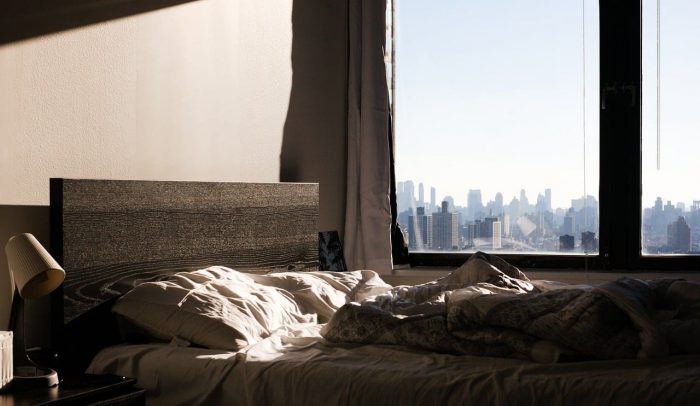
In studio apartments, you’ve got to get creative because everything’s in one open space. Using a tall bookshelf as a divider is a smart move. It doesn’t block light but still shows where the sleeping area ends and the living space begins. It’s a neat trick to make different areas feel like separate rooms without building walls.
If you’ve got an apartment with separate bedrooms, you’re working with a different game plan. Here, it’s all about making the most of each room. In the bedroom, keeping things tidy with storage under the bed or shelves on the wall can make your sleeping space feel peaceful. In the living area, choosing furniture that fits well—like a small sofa instead of a large one—can make the room feel bigger.
In studios, you can use lights to set apart different areas. In apartments with bedrooms, use lights to highlight the place’s best features. Whether you’re in a studio or a one-bedroom, the goal is to make your space feel just right for you.
How to Make a Small Living Room Feel Bigger
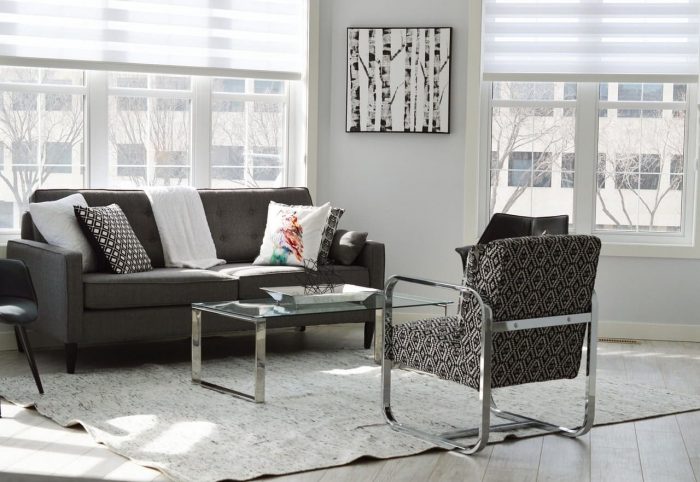
In a small apartment’s living room, leveraging the layout and furnishings can significantly impact the perception of space. Instead of focusing on wall colors, which might be restricted by rental agreements, consider the magic of furniture arrangements and smart decor choices. Position your furniture to promote an open flow of movement. For example, placing a couch against the longest wall can help elongate the room, and choosing furniture with visible legs can create a sense of openness, as it allows the eye to travel further.
Another effective strategy is to use vertical space to draw the eye upward, making the room feel taller and more spacious. Tall bookshelves that reach near the ceiling can serve this purpose, providing storage and display space while also acting as an optical illusion that heightens the room. Incorporating varying textures and a few select pieces of art or decor can add depth and interest without clutter. Opt for a minimalist approach; too many small items can make a space feel cramped. Instead, a few well-chosen, larger decor elements can make the room feel curated and more expansive.
Expanding Your Small Apartment Space Beyond the Basics
Did you know about the power of scale? Furniture size plays a crucial role in how big a space feels. Choosing furniture that’s too large can make a room feel cramped, but very small pieces can also make a space feel cluttered and smaller. It’s about finding the right balance. Opting for medium-sized furniture that fits well can trick the eye into seeing a room as larger than it actually is because it suggests ample space for movement and function.
Using a monochromatic color scheme can significantly impact the perception of space. When walls, furniture, and decor have a uniform color, it creates an uninterrupted visual flow, making the space feel more expansive. This is because a monochromatic scheme reduces visual fragmentation, which typically makes a space feel smaller. By selecting varying shades of the same color, you add depth and interest without sacrificing spaciousness.
Strategic lighting can transform a space not just by brightening it but also by adding depth and dimension. Layering different types of lighting, such as ambient, task, and accent lighting, can illuminate various aspects of a room, making it feel larger. For example, using under-cabinet lighting in a kitchen area can highlight the backsplash and countertops, creating a sense of depth that enlarges the space visually.
Reflective Surfaces Extend Spaces. Beyond mirrors, incorporating other reflective surfaces like glossy finishes on furniture or metallic decor elements can amplify light and space. These surfaces bounce light around a room, making it feel brighter and more open. This effect can be particularly effective in dark corners or areas that natural light doesn’t reach, essentially ‘pushing’ the walls outwards visually.
The Illusion of Continuity. Did you know that continuous, or uninterrupted, flooring can make a space feel larger? By using the same flooring material throughout your apartment, you create a sense of flow that visually expands the area. This continuity tricks the eye into perceiving a space as one large expanse, rather than segmented and confined areas. This approach is especially effective in open-plan apartments, where it can enhance the feeling of openness.
Outdoor Views as an Extension of Space. Leveraging the view from your windows can extend the perceived boundaries of your apartment. By arranging your space to focus on window views, you create a visual extension of your interior to the outdoors. This not only brings in natural light but also adds a vista that draws the eye beyond the physical confines of your walls, making your apartment feel more spacious and connected to the outside world.
To Conclude
Following the instructions provided in this article, this deep dive into expanding small apartment spaces brings forward unconventional yet practical strategies to visually enlarge your living area. These insights offer fresh perspectives on utilizing furniture scale, embracing monochromatic themes, mastering lighting layers, incorporating reflective surfaces, maintaining flooring continuity, and leveraging outdoor views. By implementing these techniques, you can transform your cramped apartment into a more spacious and inviting home.
Find your dream apartment!
Categorised in: Apartment Living
This post was written by Isabella Housel
Isabella Housel is a passionate and versatile professional writer with a deep love for words and a commitment to crafting compelling content that engages, informs, and inspires. With many years of experience in the industry, she has honed her skills across various genres, from creative storytelling to informative articles and technical documentation.

